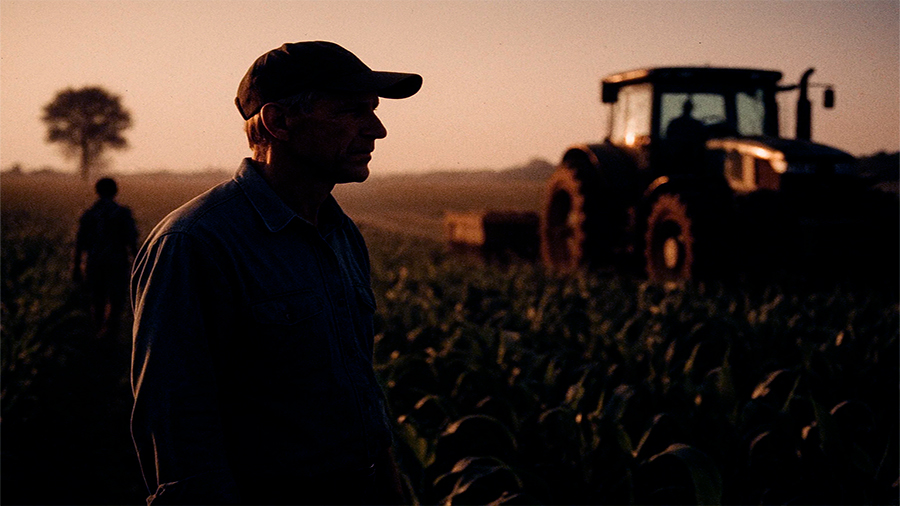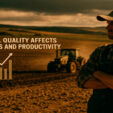How Regional Soil Quality Affects Farming Loans and Productivity
Soil quality shapes the very foundation of agricultural success, influencing everything from crop yield potential to the financial strategies farmers must adopt. A region’s soil fertility, structure, and chemical balance determine not only the types of crops that can be grown but also the scale of investment needed in inputs like fertilizers, irrigation systems, and soil amendments. In areas with naturally rich soil, farmers may achieve high productivity with minimal external support. In regions with degraded or nutrient-poor soils, significant capital is often necessary just to maintain competitive yields, which directly impacts loan requirements. Understanding the interplay between soil conditions and financing helps producers secure the right funding, manage risks, and plan for sustainable growth in competitive markets.
Soil Fertility and Its Role in Farm Yields
Natural fertility reflects a soil’s inherent nutrient reserves and its ability to support crops without heavy supplementation. Soils with high organic matter and balanced mineral content — such as loams — can sustain robust yields with moderate fertilizer applications. Conversely, sandy or heavily eroded soils often lack sufficient nitrogen, phosphorus, or potassium, necessitating substantial external inputs. This has a direct link to loan demand: the more nutrients a farm must purchase each season, the greater the working capital requirement. Lenders often evaluate historical yield data and soil test results before approving operational loans, as these indicators reveal both productivity potential and cost risks. In regions with chronic fertility issues, financing may need to cover not only immediate inputs but also long-term soil rehabilitation programs.
Common Nutrient Levels by Soil Type
| Soil Type | Natural Fertility | Typical Nutrient Deficiencies | Impact on Loan Needs |
|---|---|---|---|
| Loam | High | Minimal | Lower seasonal input financing |
| Sandy | Low | Nitrogen, Potassium | High recurring fertilizer financing |
| Clay | Moderate | Drainage improvements often needed | Possible infrastructure investment |
Soil Composition and Water Management
Water availability is deeply tied to the physical properties of soil. Sandy soils have large pores, allowing water to drain quickly but making moisture retention poor, which increases irrigation frequency and cost. Clay soils have fine particles that hold water effectively but can cause waterlogging, requiring drainage interventions. Loams strike a balance, storing enough water for crops while allowing excess to drain. These differences influence financing patterns: farmers in sandy regions often require loans for advanced irrigation systems, while clay-heavy areas may see lending for subsurface drainage. As climate variability increases, lenders factor in not only current water management needs but also projected shifts in rainfall patterns that could further alter irrigation or drainage requirements.

Water Retention Capacities of Common Soils
| Soil Type | Water Retention | Irrigation Need | Financing Considerations |
|---|---|---|---|
| Loam | Balanced | Moderate | Seasonal irrigation investment |
| Sandy | Low | High | Significant upfront irrigation costs |
| Clay | High | Low to moderate | Drainage infrastructure loans |
pH Levels and Crop Suitability
Soil pH influences nutrient availability, microbial activity, and overall crop health. Acidic soils can limit access to key nutrients like phosphorus, while alkaline soils may cause micronutrient deficiencies. In regions with extreme pH levels, corrective measures such as liming or sulfur applications become routine expenses, often requiring credit lines for timely execution. Farmers unable to make these adjustments may face reduced yields and profitability. For lenders, pH extremes represent higher risk, as they signal recurring costs that cut into margins. They may adjust loan terms, require collateral, or prioritize financing for corrective amendments before funding larger expansion projects.
Typical pH Ranges and Crop Preferences
| pH Range | Suitable Crops | Common Adjustments | Impact on Budget |
|---|---|---|---|
| 5.5 – 6.5 | Corn, Soybeans, Vegetables | Minimal lime applications | Lower recurring costs |
| 6.5 – 7.5 | Wheat, Barley, Alfalfa | Balanced nutrient uptake | Standard fertilizer budgets |
| Above 8.0 | Some grains, tolerant forage crops | Sulfur or gypsum treatments | Higher ongoing amendments |
Climate–Soil Interactions and Financial Impact
Climate amplifies the effects of soil characteristics. In arid regions with sandy soils, low rainfall and high evaporation rates mean irrigation is non-negotiable, making upfront infrastructure costs significant. In tropical zones with heavy rainfall on clay soils, drainage becomes critical to prevent crop loss from waterlogging. Seasonal weather volatility — such as prolonged droughts or sudden flooding — forces farmers to invest in adaptive measures like water storage, raised beds, or soil-covering systems. These adaptations frequently require financing beyond regular operating loans, pushing demand for tailored credit products that match local climatic and soil realities.
Regional Variations and Lending Patterns
Soil quality varies dramatically across geographic regions, shaping both crop selection and financing models. For example, the U.S. Midwest’s deep loams support high-yield corn and soybean production with moderate input costs, leading lenders to focus on equipment and expansion loans. In contrast, parts of Sub-Saharan Africa with nutrient-poor soils often see credit programs aimed at fertilizer access and soil restoration. Banks and microfinance institutions often design loan products based on these regional conditions, incorporating flexible repayment terms aligned with harvest cycles. Farmers who align loan applications with their region’s soil realities are more likely to secure funding with favorable terms.

Case Studies by Region
Midwest United States
Highly fertile Mollisols allow consistent high yields. Farmers here often take loans for precision farming equipment rather than basic inputs, as soil fertility reduces dependency on heavy fertilization. Credit risk is lower, allowing for competitive interest rates.
Punjab, India
Alluvial soils rich in nutrients support intensive rice-wheat rotations but demand high water inputs. Loan demand centers on irrigation infrastructure and tube wells. Seasonal credit cycles are tightly linked to planting seasons.
Sahel Region, Africa
Sandy, degraded soils with low organic matter require extensive soil amendments and drought-resistant crop varieties. Loans often focus on seed and fertilizer procurement, with NGOs sometimes subsidizing interest to encourage soil improvement practices.
Long-Term Productivity and Soil Investment
Investing in soil health yields compounding returns. Practices like cover cropping, reduced tillage, compost application, and crop rotation improve organic matter and structure, reducing dependency on costly inputs over time. These improvements often require initial funding, but they reduce long-term loan dependency by lowering variable costs and stabilizing yields. Lenders increasingly recognize sustainable practices as risk mitigators, sometimes offering better rates to farmers who implement soil conservation measures.
The Conclusion
Regional soil quality dictates not only the biological potential of farms but also the financial strategies necessary to sustain productivity. Understanding your soil’s strengths and limitations allows for targeted investments — whether in nutrients, water systems, or structural improvements — and helps match loan requests to actual production needs. The closer farmers and lenders align these realities, the stronger the prospects for both agricultural output and financial stability.

